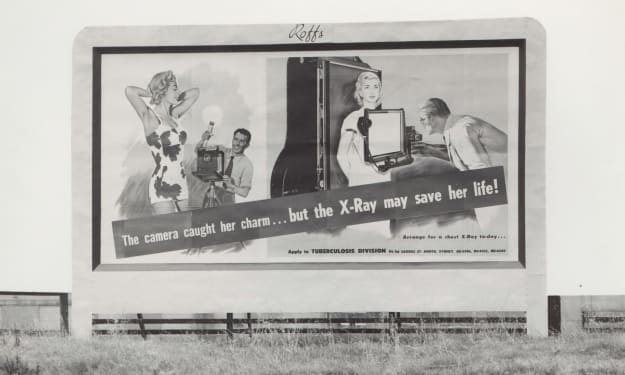From Discovery to Lifesaver: The Fascinating Story of Insulin Unearthed by Frederick Banting and Charles Best
Insulin Unearthed: A Lifesaving Journey
Introduction
The impact of insulin as a revolutionary discovery
Brief background on diabetes and its treatment prior to insulin
In the early 1920s, a groundbreaking discovery took place that would change the lives of millions around the world. Insulin, a hormone essential for regulating blood sugar levels, was first isolated and synthesized by Canadian medical scientists Frederick Banting and Charles Best. Before the discovery of insulin, individuals with diabetes faced severe limitations in their daily lives due to the lack of effective treatments. This article delves into the remarkable journey of Banting and Best as they uncovered and refined insulin, ultimately transforming it into a life-saving therapy for those living with diabetes.
Early Research Efforts
- The role of diet and exercise in managing diabetes
- The limitations of existing treatments: restricted diets, fasting, and constant monitoring
- The search for a more effective solution
Long before the era of insulin, diabetes management relied heavily on strict dietary control and exercise. Patients had to adhere to highly restricted diets, often devoid of carbohydrates, which led to significant inconvenience and discomfort. Fasting was another method employed to control blood sugar levels, often with mixed results. Additionally, continuous monitoring of urine sugar levels was necessary, making diabetes management a constant, challenging task.
These prevailing treatment methods, however, offered limited effectiveness in managing the disease. Researchers and physicians were adamant about finding a more efficient solution, one that would allow individuals with diabetes to lead normal lives without the constant fear of complications, such as diabetic ketoacidosis or hypoglycemia.
The Quest for a Pancreatic Extract
- Frederick Banting's motivation and inspiration
- Collaborative efforts with Charles Best
- The development of a hypothesis
Motivated by a desire to make a significant contribution to medical science, Frederick Banting embarked on an ambitious quest to isolate and extract insulin. He was deeply inspired by the tragic cases of people succumbing to diabetes, driven to find a solution that would provide true relief. Encouraged by the renowned physiologist, John Macleod, Banting joined forces with Charles Best, a young and talented research assistant, to pursue this revolutionary endeavor.
Together, they developed a hypothesis suggesting that by ligation of the pancreatic ducts, they could create a more potent extract. Banting believed that this extract, when administered to individuals suffering from diabetes, would facilitate the metabolism of carbohydrates and thus regulate blood sugar levels. Intrigued by this innovative idea, Banting and Best set out to carry out an experiment that would test the validity of their hypothesis.
The Critical Experiment
- The controversial decision to use dogs as test subjects
- The extraction process and initial experiments
- Promising results that sparked hope
Banting and Best's decision to use dogs as experimental subjects attracted significant criticism at the time. However, their rationale was rooted in the fact that dog pancreases closely resemble human pancreases in terms of structure and function. The controversial experiment involved ligation of the pancreatic ducts in dogs to initiate the production of a potent extract.
The extraction process required careful procedures to collect and purify the insulin-rich material. Through numerous iterations, Banting and Best refined their techniques, ensuring the consistency and purity of their extract. Following the extraction, they administered the insulin extract to diabetic dogs, continuously monitoring their blood sugar levels.
The results of their experiments were astonishing. The diabetic dogs experienced significant improvements in their symptoms, with blood sugar levels returning to near-normal ranges. This success instilled hope in Banting and Best, fueling their determination to further develop and refine their insulin discovery.
The Production and Refinement of Insulin
- Securing support from J.J.R. Macleod and the University of Toronto
- The challenges faced in mass-producing insulin
- Improvements in the extraction technique
Recognizing the paramount importance of their discovery, Banting and Best sought the support of J.J.R. Macleod, a leading figure in the field of physiology. Macleod provided them with the necessary resources and facilities at the University of Toronto, allowing for larger-scale experiments and the refinement of their insulin extraction techniques.
The mass production of insulin, however, posed significant challenges. Collaborating with skilled chemists, Banting and Best worked tirelessly to optimize the extraction process, ensuring the consistent formation and potency of insulin in larger quantities. Through trial and error, they overcame these obstacles, making significant advancements in the extraction technique and ultimately paving the way for the widespread availability of insulin.
The First Human Trials
- The first successful use of insulin on patients
- Dramatic improvements in the quality of life for individuals with diabetes
- The global recognition of Banting and Best's achievement
Following their success with canine subjects, Banting and Best proceeded with the first trials involving human patients. These initial trials, carried out in 1922, marked a pivotal moment in medical history. Patients who had been suffering from the debilitating effects of diabetes experienced unprecedented improvements in their conditions upon receiving insulin therapy.
Insulin not only regulated their blood sugar levels but also allowed for a normal diet, alleviating the burdensome dietary restrictions previously imposed. Suddenly, individuals with diabetes could lead fulfilling lives, liberated from the constant fear of life-threatening complications. Banting and Best's achievements were met with global recognition, solidifying their place in medical history.
The Nobel Prize and Beyond
- The accolades received by Banting, Best, and Macleod
- The commercialization of insulin and its widespread availability
- Controversies surrounding the patenting of insulin
In recognition of their monumental contribution, Frederick Banting and John Macleod were jointly awarded the Nobel Prize in Physiology or Medicine in 1923. Charles Best, unfortunately, was not included in the award. The commercialization of insulin followed swiftly, allowing for its widespread availability to those in need. However, controversies arose surrounding the patenting of insulin, with debates centered around the ethical implications of profiting from a life-saving medication.
The Evolution of Insulin
- Advancements in insulin formulation and delivery methods
- Allowing for improved glycemic control and convenience for patients
- Current challenges and ongoing research
Throughout the years, insulin has undergone significant advancements in formulation and delivery methods. The introduction of purified insulin and the development of insulin analogs have improved glycemic control, minimizing side effects and optimizing dosing. New delivery methods, such as insulin pumps and continuous glucose monitors, have enhanced convenience and ease of use for patients.
Despite these achievements, challenges persist. Accessibility issues and the high cost of insulin pose significant barriers for many individuals with diabetes. Ongoing research seeks to address these concerns while also exploring innovative ways to improve insulin therapy, including closed-loop systems that automate insulin delivery.
The Life-Changing Impact of Insulin
- Personal stories of individuals whose lives were transformed
- The social, economic, and healthcare implications of insulin
Insulin has undeniably transformed the lives of countless individuals living with diabetes. Personal stories abound with tales of renewed hope, improved health, and liberated lifestyles. The introduction of insulin has not only made a profound impact on the individuals directly affected but also on wider society. The improved health and well-being of individuals with diabetes have resulted in enhanced productivity, reduced healthcare costs, and a more inclusive society.
Criticisms and Ethical Considerations
- The high cost of insulin and accessibility issues
- Ethical debates surrounding the use of animals in research
- Balancing profit motives with patient welfare
Despite its life-saving potential, insulin has faced criticism due to its high cost and accessibility issues. The financial burden placed on individuals reliant on insulin can be significant, leading to inequities in healthcare. Ethical debates also surround the use of animals in insulin research, raising questions about the balance between scientific progress and the welfare of animals. Furthermore, the tension between profit motives and ensuring affordable access to essential medications remains a central ethical consideration.
Innovations and Future Possibilities
- The development of insulin analogs and closed-loop systems
- Future directions for diabetes management
As researchers and scientists continue to push the boundaries of medical science, innovations in diabetes management continue to emerge. Insulin analogs, with their modified properties, offer improved dosing precision and extended durations of action. Closed-loop systems, integrating continuous glucose monitors and insulin pumps, hold promise for automating insulin delivery and optimizing glycemic control. The future of diabetes management is bright, with ongoing research focusing on improving patient outcomes and advancing the field.
Summary
This article has explored the captivating journey of Frederick Banting and Charles Best as they discovered and refined insulin. From the early research efforts to the critical experiment and the subsequent development and commercialization of insulin, their breakthrough has left an indelible mark in medical history. Insulin has transformed the lives of millions, enabling individuals with diabetes to live healthier, fuller lives. Banting and Best's achievement stands as a testament to the power of human ingenuity and serves as a reminder of the importance of scientific curiosity in driving breakthrough discoveries.
About the Creator
Naveed Ahmed Syed
"🔬 Scientific researcher with a trail of published work in global journals. 📚 I bridge the gap between complex concepts and curious minds through engaging articles and reviews. Embark on a voyage of enlightenment with me!"







Comments
There are no comments for this story
Be the first to respond and start the conversation.